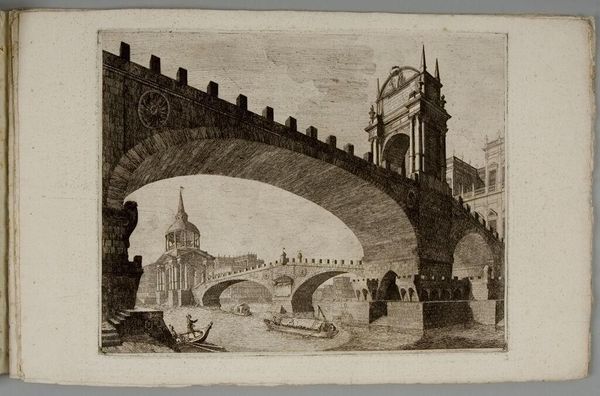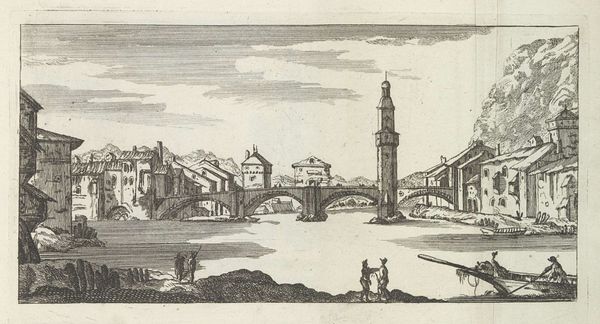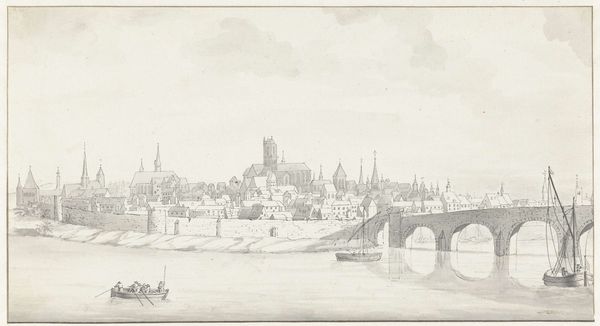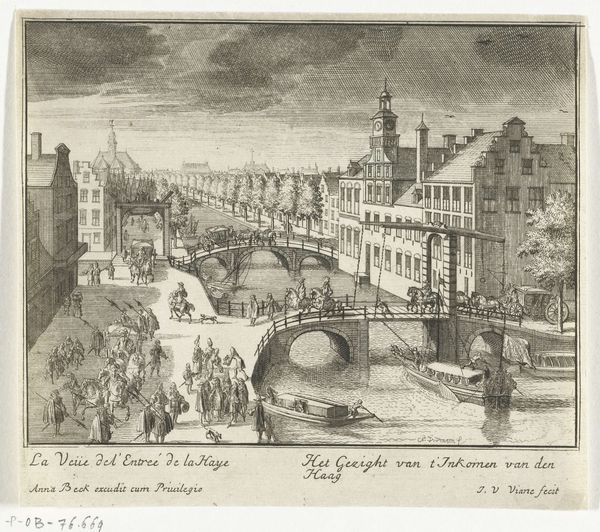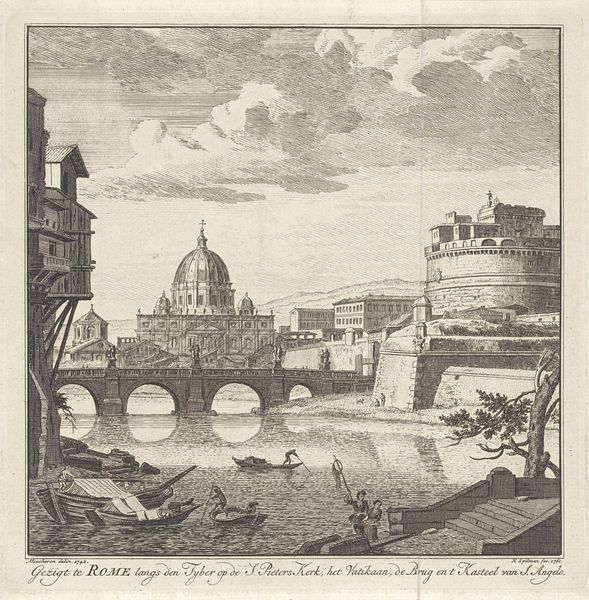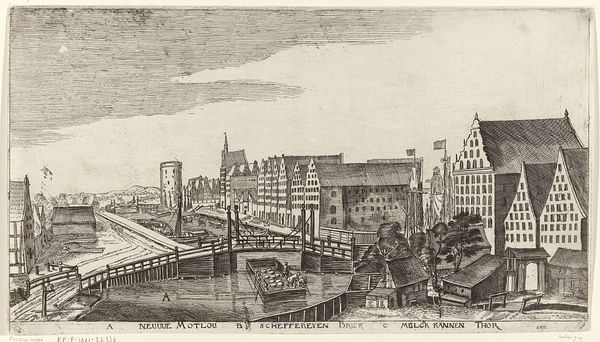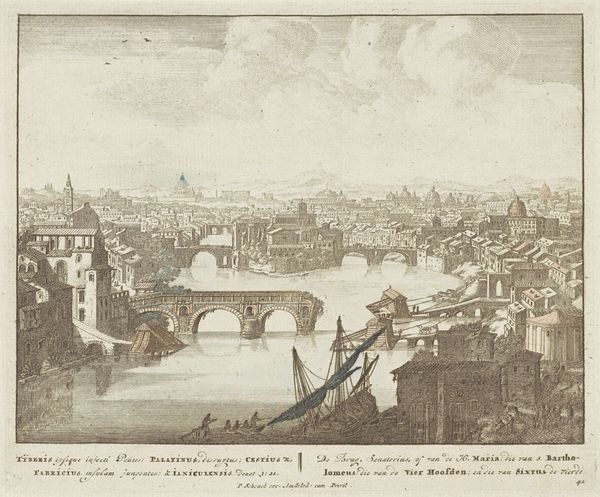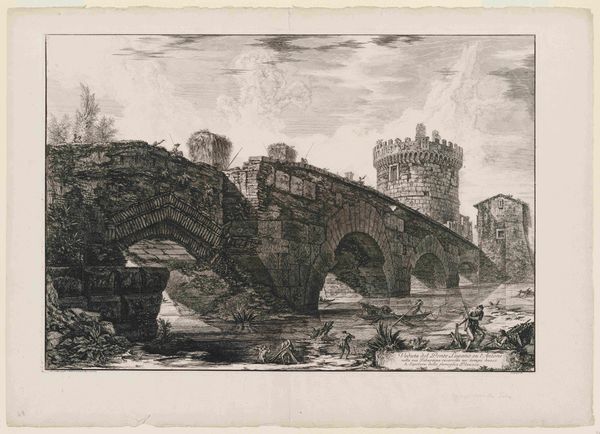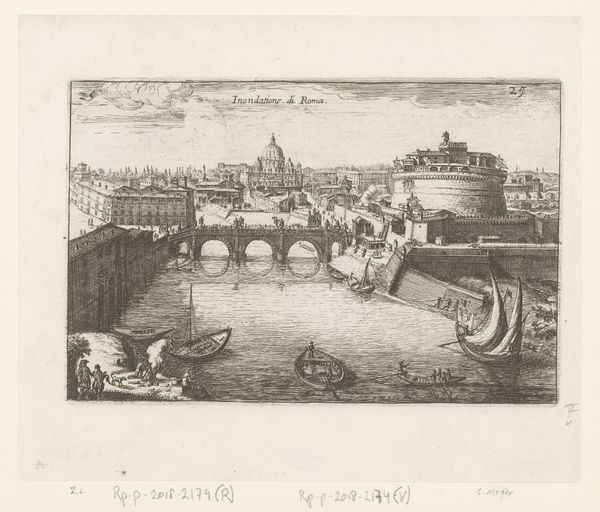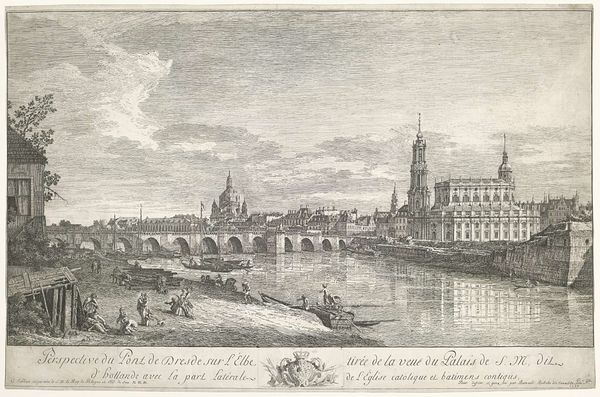
Dimensions: height 220 mm, width 275 mm
Copyright: Rijks Museum: Open Domain
This print of two bridges over a river was made in the 1700s by Vincenzo Mazzi, using etching. This is an intaglio process – acid is used to bite lines into a metal plate, which is then inked and printed. Look closely, and you can see the incredible detail achieved. Mazzi used a technique called cross-hatching to create a sense of depth and shadow. This involved carefully layering fine lines to build up tone. Consider the amount of time and skill required to create such a detailed image. The printmaking process also allowed for the mass production of images. This made art more accessible to a wider audience. It also served as a form of documentation. For example, the bridges themselves were feats of engineering and signs of civic pride. The print celebrates not just the skill of the artist, but of the architects and laborers who built these important structures. Ultimately, this print speaks to the power of process, and the social context in which art is made.
Comments
No comments
Be the first to comment and join the conversation on the ultimate creative platform.
